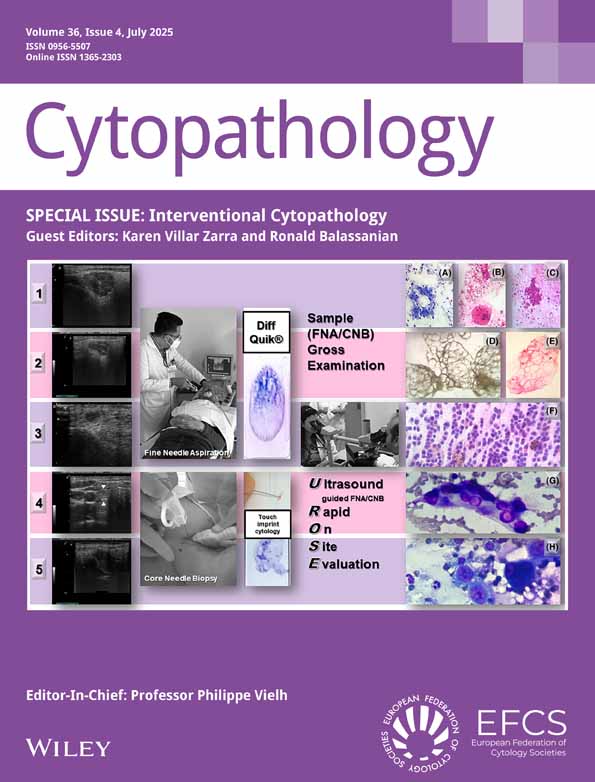Cytology of pseudomyxoma peritonei
Abstract
enCytology of pseudomyxoma peritonei
The cytology of five cases of pseudomyxoma peritonei is described. It is characterized by large masses of mucinous material, some of which is wrapped up in a network of elongated fibroblast-like cells. Irregular clusters of flat branching vimentin-positive fibroblast-like cells may be found as the disease progresses. Goblet or tumour cells were not found in the cytology preparations, although they were seen in the histological sections of the one case which was biopsied. The appendiceal origin of pseudomyxoma peritonei could not be traced in three of four male patients, and the cause of the disease remained undetermined. Autopsy of the fourth case demonstrated a complete replacement of the appendix by mucus.
Abstract
frCytologie du pseudomyxome péritonéal
Ce travail décrit la cytologie du pseudomyxome péritonéal. Cette lésion est caractérisée par de larges plages de matériel mucineux dont certaines sont entourées par un réseau de cellules allongées pseudo-fibroblastiques. Des agrégats irréguliers de cellules pseudo-fibroblastiques aplaties et ramifiées, vimentine-positives, peuvent être rencontrées lorsque la maladie progresse. Sur les préparations cytologiques on ne trouve pas de cellules gobelet ni de cellules tumorales alors qu'elles sont présentes sur les coupes histologiques de cas ayant fait l'objet d'une biopsie. L'origine appendiculaire de pseudomyxome péritonéal n'a pas pu être prouvée chez 3 des 4 patients masculins et l'etiologie de la lésion est demeurée indéterminée. L'autopsie du quatrième cas a constate le remplacement total de l'appendice par le mucus.
Abstract
deDie Zytologie des Pseudomyxoma peritonei
Das zytologische Bild des Pseudomyxoma peritonei wurde an fünf Fällen erarbeitet. Charakteristisch sind Eiweissmassen von denen ein Teil in ein Netzwerk fibroblastenähnlicher Zellen gehüllt ist. Diese Zellen sind vimentinpositiv und nehmen im Verlauf der Erkrankung zu. Becherzellen oder Tumorzellen warn zytologisch nicht nachweisbar, obgleich Becherzellen im einzigen Fall mit histologischer Biopsie nachweisbar waren. Der Ausgangspunkt von der Appendix konnte bei drei der vier Männer nicht gesichert werden, da diese vor langer Zeit entfernt worden waren. Im vierten Fall war die Appendix vollkommen durch Schleimmassen zerstört.




